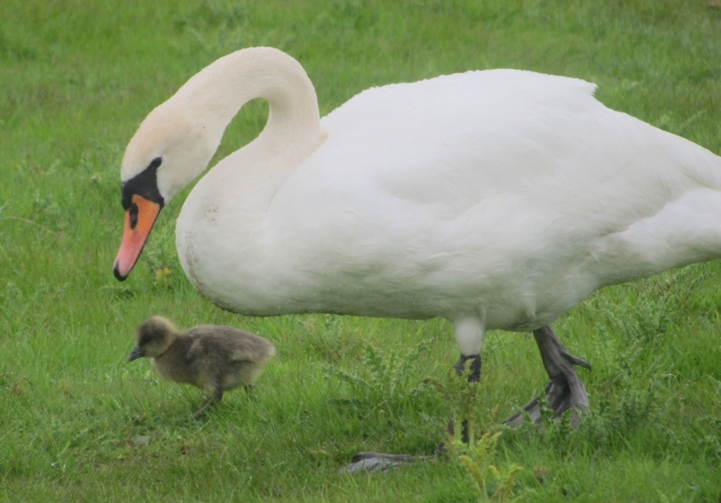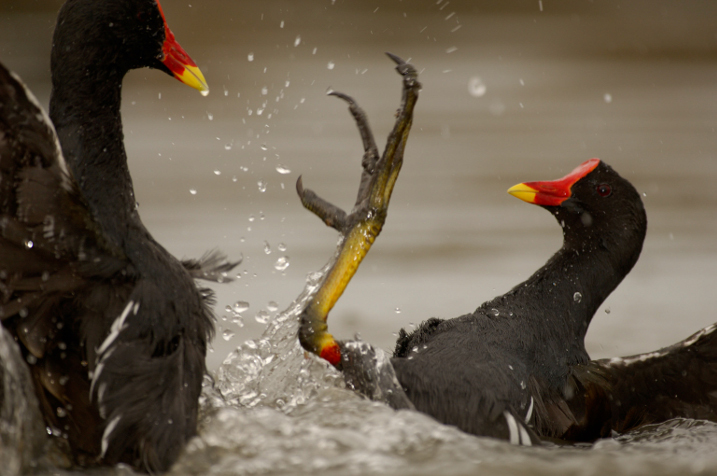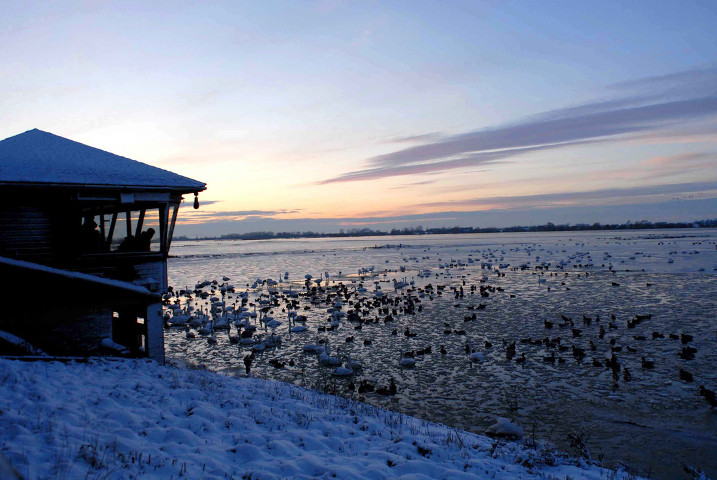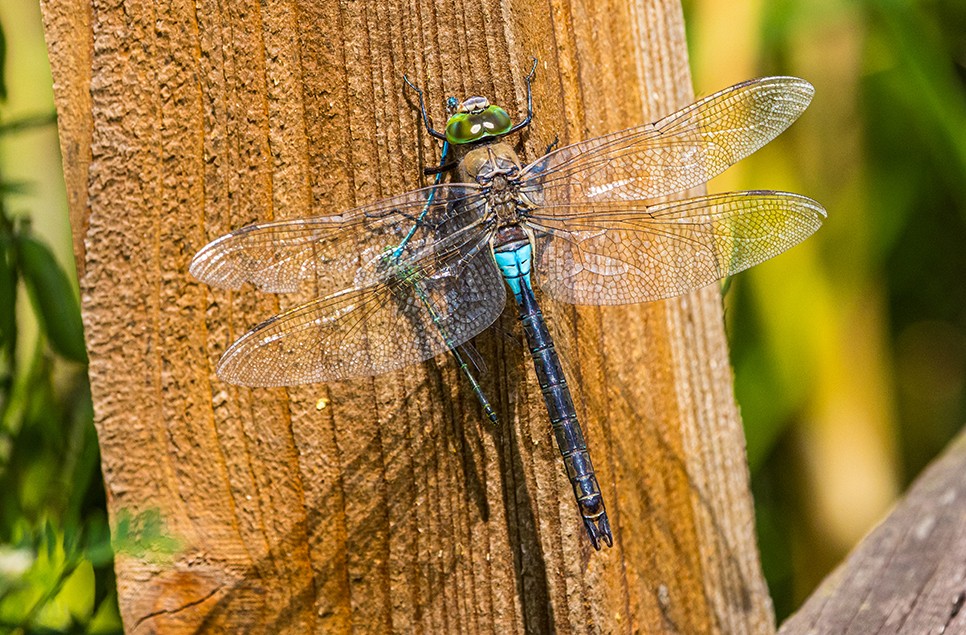Can swans and geese be aggressive?
Are some birds more aggressive than others? Not according to new research by WWT.
Mute swans are the largest waterfowl in the UK. They can weigh up to 13kg and have a wingspan of 2.4m. Their size alone can make them intimidating, not to mention the catalogue of stories that might lead you to wonder if swans are in fact dangerous.
Many of us will have childhood memories of being dwarfed by swans or chased by hissing farmyard geese. And if you escaped this, you will have no doubt heard the story about a swan being able to break a man’s arm with its wing.
At WWT reserves and in many wetland habitats, you are likely to come across different species of swan. Most common is the mute swan, but you may also encounter the smaller and somewhat more elegant migrant swans - the Bewick's and Whooper.
Birds at WWT reserves are very rarely aggressive to people, as the latter often come bearing food. Even so, it's easy to be intimidated by large birds, but if you understand the motivations that underlie potentially aggressive behaviour it's much easier to feel safe. And, as WWT's research shows, swans and geese have unfair reputations for aggression.
WWT's research shows that swans are no more or less aggressive than other birds
“Visitors to our reserves are often interested in why some waterbirds spend so much time fighting and why some seem more aggressive than others, so we set out to try to answer these questions,” says Kevin Wood, WWT researcher.
The research team from WWT, University of Exeter, and the Russian Academy of Sciences drew together over 550 detailed reports of waterbird behaviour, which allowed them to compare levels of aggression shown by different waterbirds. The study was published in the scientific journal Animal Behaviour in 2017.
Geese also have a reputation for aggression. These farmyard defenders are well known for their hissing and many say they are a more effective deterrent than a dog.
The team was surprised to find no evidence to suggest that swans or geese were more aggressive than other waterbirds. Instead, the sex and age of the birds played a much greater role in shaping how aggressive birds are. The evidence showed that males spent more time being aggressive than females and adults were more aggressive than juveniles.
 A swan and gosling | by James Lees
A swan and gosling | by James Lees
Some tips on how to behave around swans and geese
- Be respectful of the bird's territory - they're easy to spot normally, so make sure you walk around them.
- Look out for any potential signs of aggression. Swans form their wings into an arched shape to make themselves appear bigger, whilst geese dart their heads in and out. Both make loud hissing noises, so you won't be in any doubt!
- If the bird is behaving in an aggressive fashion, simply back away. This will often be the bird's goal and solve the problem of the behaviour. Keep in mind that while these birds make a lot of noise and bluster, a physical attack is very rare.
- Remember that geese especially can be curious and cheeky creatures, and their beaks are basically our equivalent of their finger tips - they use them to investigate everything! So what might seem to be aggressive behaviour might actually be curiosity.
Where has the aggression myth come from?
The long-held misconception that’s swans are more aggressive than other birds is something that has endured in the popular imagination for generations. Old wives tales and children’s stories perpetuate the myth of swans as aggressive birds and people’s personal experiences often seem to back it up.It’s even likely that these myths were purposely fed into the public psyche. In the days when swans were considered prize game, landowners would encourage tales of how dangerous they were as a deterrent to keep people away from their birds.
Size matters
The researchers suggest that size is an important factor in perpetuating the myth.
“When a swan displays aggressive behaviour because of its size and bright white colour it can cause quite an obvious commotion. People are going to notice all that hissing and wing flapping. Whereas if a smaller, drab bird displays its version of the same behaviour it is likely to go unnoticed. So the perception that swans are more aggressive than other birds may have more to do with their large size and bright white feathers, rather than their behaviour,” says Kevin.
Mute swans are also found in public places like parks. This means their behaviour is more likely to be seen by the public. It also means that many swans are so familiar with humans that they no longer fear them.
‘The public come across swans in places like the local park where they will be very used to humans, so unafraid of approaching them, and they’re often in dense groups fighting for the bits of food that people are handing out,’ explains Wood.
 Moorhens fighting is a common sight in spring
Moorhens fighting is a common sight in spring
Mass hysteria
Many of the stories that get relayed to staff at WWT are around swans defending their nests and young. Researchers found no evidence that birds were more aggressive at nesting time than any other. Rather, aggressive behaviour between birds was seen at all times of year in both migratory and non-migratory species.
The research suggests that the density of the group may be an important factor in provoking aggressive behaviour among birds.
“There seems to be a lot of squabbling that goes on when a group of birds are settling into a new area and establishing a pecking order. That’s true whether it’s their breeding grounds after a long migration or their local moulting site in summer. These birds are fighting over scarce resources such as nesting sites and limited food supplies,” says Wood.
The team have been observing the migratory Bewick’s and whooper swans at WWT Welney over the winter and are continuing with their research into waterbird behaviour.
 WWT Welney's huge swan flocks make it ideal for research
WWT Welney's huge swan flocks make it ideal for research
Swans are beautiful and mysterious creatures, a sight to behold in wetlands. Learn more about swans



